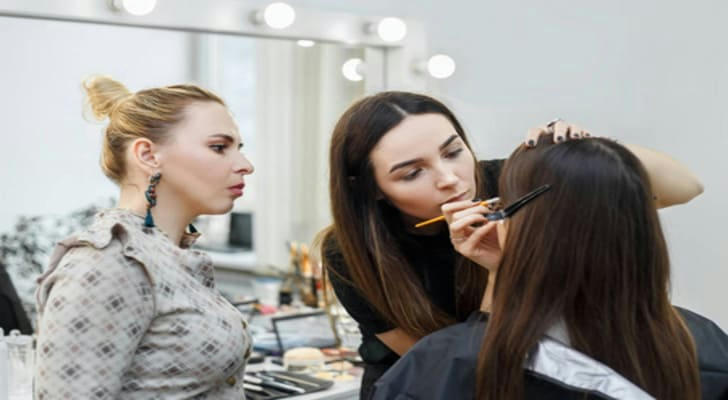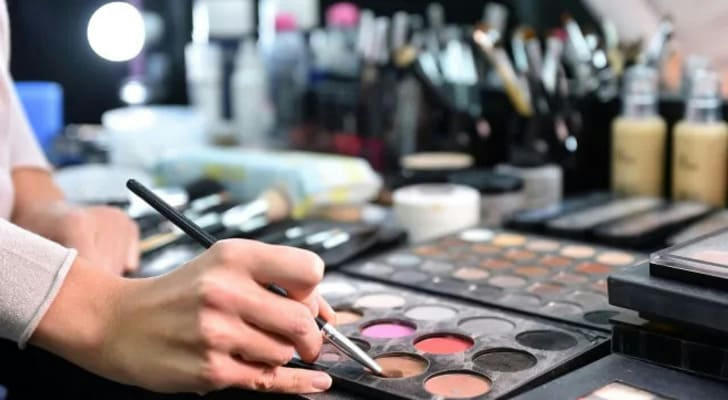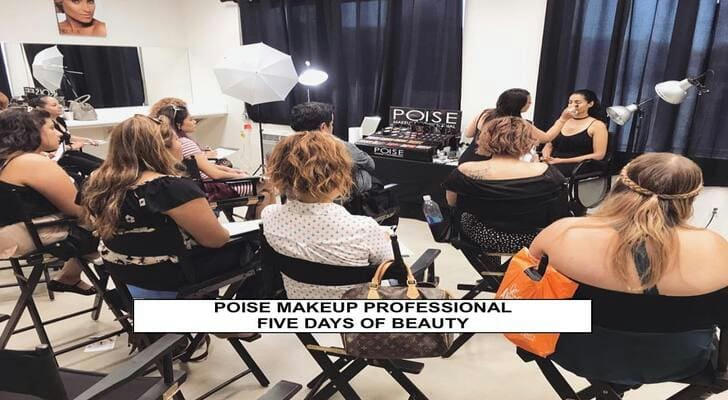Makeup Artist Course
In the U.S., makeup artistry is not just a form of creative expression but a professional field blending technical skill and business acumen. From film special effects to bridal glam, runway fashion to social media influencer beauty, diverse career paths demand specialized training. Yet, navigating hundreds of beauty schools and short-term programs requires careful discernment. This article breaks down the core content, teaching methodologies, and evaluation criteria for U.S. makeup courses, offering tailored guidance for aspiring artists with varied career goals.

I. Core Categories of Makeup Courses and Career Alignment
U.S. makeup training programs fall into four primary categories, each targeting specific skills and industries.
1. Foundational Makeup Artistry (Basic Makeup Artistry)
Target Audience: Beginners aiming to master everyday, bridal, and commercial makeup.
Leading Institutions:
Aveda Institute: Focuses on skincare science, color theory, and tool fundamentals, emphasizing “skin-first” philosophies.
Make-Up Designory (MUD): Offers 600-hour foundational courses (NYC/LA campuses) with 50+ hours of live model practice.
Program Highlights:
Modular Learning: Phased training in base application, eye/lip contouring, and concealing techniques.
Client Communication: Role-play consultations to practice needs analysis and contract negotiations.
2. Film & Special Effects Makeup (Film & SFX)
Target Audience: Aspiring artists for Hollywood, streaming platforms, or theater.
Leading Institutions:
Cinema Makeup School (L.A.): Covers:
Trauma & Aging Effects: Using silicone and latex to create realistic wounds and wrinkles.
Prosthetic Design: 3D-printed prosthetics for fantasy characters (e.g., Avatar-style creations).
Tom Savini’s Special Make-Up Effects Program: Focuses on horror effects (blood splatter, zombie decay) under the iconic SFX master.
Program Highlights:
On-Set Internships: Collaborations with Universal Studios and Netflix for real-world film/TV projects.
Cross-Disciplinary Training: Lighting adjustments (minimizing glare) and 4K camera-ready techniques.
3. Fashion & Editorial Makeup (Fashion & Editorial)
Target Audience: Artists targeting fashion weeks, magazine shoots, or luxury brand collaborations.
Leading Institutions:
Makeup Forever Academy (NYC/Paris): Teaches:
Backstage Speed Techniques: Full face application in 20 minutes for rapid outfit changes.
Avant-Garde Design: Deconstructivism, metallic futurism, and artistic expression.
Blanche Macdonald Centre (Vancouver/NYC): Offers trend forecasting, analyzing Pantone Color of the Year’s impact on makeup.
Program Highlights:
Brand Partnerships: Access to pre-launch products from Dior and Pat McGrath Labs.
Portfolio Development: Professional photoshoots aligning with Vogue or Allure submission standards.
4. Sustainable & Inclusive Beauty (Sustainable & Inclusive Beauty)
Target Audience: Eco-conscious artists or those serving diverse skin tones/conditions.
Leading Institutions:
Fashion Institute of Technology (FIT): Features “zero-waste beauty” courses, teaching DIY natural products (beeswax lip balms) and biodegradable glitter.
Makeup First: Specializes in deep skin tones and sensitive skin solutions, covering:
Hyperpigmentation Correction: Techniques for acne scars, vitiligo, and other conditions.
Cultural Aesthetic Adaptation: Facial bone structure and color preferences across ethnicities.
II. Core Components of Quality Curricula

Top-tier programs integrate technical training, industry insights, and business skills through structured content.
1. Scientific Foundations
Skin Physiology: Skin type analysis (dry, oily, combination) and cosmetic ingredient profiling (avoiding allergens).
Color Theory: Mastery of the Munsell Color System to balance warm/cool tones for different skin undertones (e.g., burgundy blushes over orange for olive skin).
2. Technical Mastery & Tool Proficiency
Professional Tools:
Brushwork: Flat-top foundation brushes vs. tapered blending brushes for specific effects.
Airbrush Techniques: Matte finishes for HD photography or long-lasting wedding makeup.
Specialized Materials: Applying glitter, rhinestones, or gold leaf without irritation or fallout.
3. Industry Network Integration
Brand Certifications: Charlotte Tilbury or MAC Pro memberships for exclusive training and discounts.
Career Networking: Attendance at events like IMATS (International Makeup Artist Trade Show) to connect with agents and photographers.
4. Digital Skill Expansion
Virtual Makeup Design: Using Photoshop or Virtual Makeup Studio to preview looks.
Social Media Marketing: TikTok/Instagram Reels tutorials for personal brand building.
III. Five Key Metrics for Evaluating Programs
1. Faculty Expertise & Industry Ties
Instructor Credentials: Prioritize teachers with film, fashion, or celebrity client experience (e.g., MUD’s Hunger Games makeup artists).
Guest Lecturers: Programs hosting Fenty Beauty global directors or NYFW stylists add credibility.
2. Program Duration & Hands-On Training
Minimum Hours: 300+ hours for basics (100 theory + 200 practical); 1,000+ hours for SFX.
Internships: Verify placements at beauty counters, film sets, or bridal studios.
3. Accreditation & Career Support
Certifications: CIDESCO, ITEC, or state licenses (e.g., California’s 1,600-hour requirement).
Employment Data: Request graduate outcomes (agency signings, freelance studio launches).
4. Facilities & Product Libraries
Studio Quality: Ring lights, multi-angle mirrors, and HD cameras for precision work.
Product Diversity: Access to 50+ brands, including organic lines like RMS Beauty.
5. Portfolio Development & Exposure
Industry Judging: Final projects reviewed by Netflix stylists or magazine editors.
Digital Portfolios: Assistance uploading to Behance or The Powder Group platforms.
IV. Avoiding Pitfalls: Red Flags in Low-Quality Programs

1. Fake “Celebrity Collaboration” Claims
Verification: Demand written proof of brand/celebrity ties; cross-check instructors’ IMDb credits.
Case Study: A 2022 Florida program was sued for falsifying Rihanna team collaborations.
2. Hidden Fees & Mandatory Kits
Risk: Pressure to buy subpar in-house products at inflated prices.
Solution: Choose programs allowing personal tools or offering brand discounts.
3. Lack of Live Model Practice
Minimum Standard: 30%+ of course hours on live models (not mannequins).
Warning: Rubber models cannot replicate real skin texture or client interaction.
Conclusion
Choosing a makeup artist course in the U.S. is an investment in a “career accelerator”—one that merges technical excellence with industry access. Whether aspiring to glamorize A-list celebrities or champion inclusive beauty, success hinges on selecting programs with robust curricula, seasoned mentors, and real-world opportunities. By scrutinizing accreditation, hands-on training, and alumni networks, students can transform brushes and palettes into professional tools. Remember: Exceptional training shapes not just skills, but also artistic vision and industry fluency.
